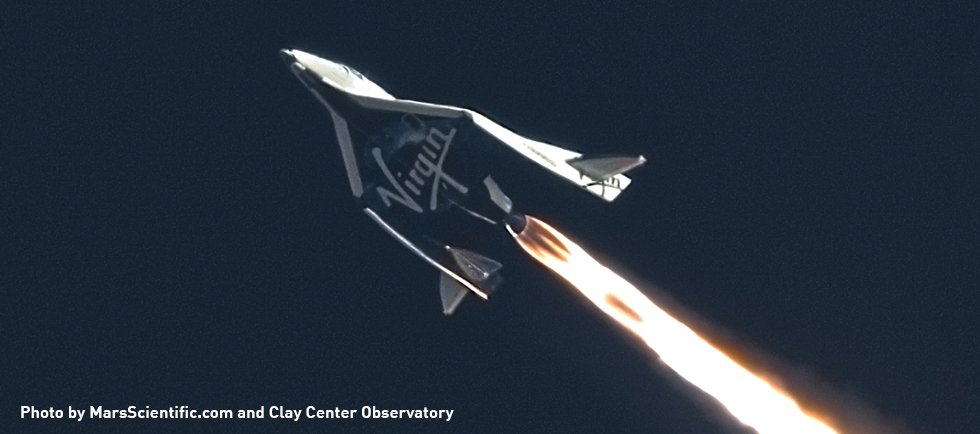Virgin Galactic's SpaceShipTwo Spaceliner: Test Flight Milestones

On Oct. 31, 2014, during its 55th test flight and its fourth powered test flight, SpaceShipTwo suffered a serious accident, resulting in the destruction of the vehicle and death of one pilot, while another pilot parachuted to safety with injuries.
SpaceShipTwo is a suborbital space plane designed and built by Scaled Composites. The vehicle is designed to carry two pilots and six passengers on short space flights. Its predecessor SpaceShipOne won the $10 million Ansari X Prize in 2004, after becoming the first private craft to fly people to space and back twice in the span of a week. Virgin Galactic has partnered with Scaled Composites with the intention of using SpaceShipTwo for commercial suborbital space flight. [Virgin Galactic's SpaceShipTwo Crash: Full Coverage]

Here is a timeline of major events and test flights for Virgin Galactic:
October 2004 - Virgin Galactic Announced - British billionaire Sir Richard Branson announces that he is forming the new company Virgin Galactic to build a passenger space plane for suborbital flights after witnessing SpaceShipOne win the Ansari X Prize. The new company would work closely with SpaceShipOne's builder Scaled Composites to build a new two-pilot, six-passenger spacecraft called SpaceShipTwo.
Dec. 7, 2009: First SpaceShipTwo Vehicle Unveiled - Virgin Galactic hosted a major event to debut the first SpaceShipTwo vehicle, called the Virgin Space Ship (VSS) Enterprise.
March 22, 2010: First Capture-Carry Flight - The carrier plane WhiteKnightTwo (WK2) went aloft for the first time while carrying SpaceShipTwo. The plane was unmanned and was not released.
July 16, 2010: First Crewed Flight - SpaceShipTwo was carried by the WhiteKnightTwo carrier plane for 6 hours and 12 minutes, but was not released. Peter Siebold and Michael Alsbury rode aboard the VSS Enterprise and evaluated the spacecraft's systems and functions.
Get the Space.com Newsletter
Breaking space news, the latest updates on rocket launches, skywatching events and more!
Oct. 10, 2010: First Solo Glide Flight - SpaceShipTwo was released at 46,000 feet, and had a total flight time of 13 minutes. The test was a glide flight only, meaning the engines were not turned on. The vehicle was piloted by Peter Siebold and copiloted by Mike Alsbury.
April 29, 2013: First Powered Test Flight - SpaceShipTwo ran its engines for 16 seconds while free of the carrier plane. The vehicle climbed to a maximum altitude of 56,000 feet (17,000 meters), and reached Mach 1.2 or 761 miles per hour (1224 km/h) at sea level, fast enough to break the sound barrier. This was SpaceShipTwo's 26th test flight, and it was preceded by two glide test flights, on April 3 and April 12. The flight was piloted by Mark Stucky and co-piloted by Mike Alsbury.
Sept. 5 2013: Second Powered Test Flight - SpaceShipTwo burned its engines for 20 seconds—four seconds longer than on the previous flight. The craft beat its previous record for altitude and speed, reaching a maximum altitude of 65,000 feet (21031 meters) and a top speed of Mach 1.6 or 1,217 miles per hour at sea level. The craft was piloted by Mark Stucky and copiloted by Clint Nichols.
Jan. 10, 2014:Third Powered Test Flight - SpaceShipTwo and set a record for altitude, reaching 71,000 feet (21,641 meters). The space plane burned its engines for 20 seconds and reached Mach 1.4 or 1,065 miles per hour at sea level. Following the successful test flight, officials of Virgin Galactic said in a statement that the company is on course to start commercial services in 2014. The vehicle was piloted by Dave Mackay and copiloted by Mark Stucky.
Early October, 2014: Rocket Motor Ready - Virgin Galactic CEO George Whitesides tells Space.com that the SpaceShipTwo's rocket motor has passed vital qualification tests, and that the company will soon begin a new round of powered flight tests.
Oct. 8, 2014: 54th Flight Test - SpaceShipTwo completes its 54th test flight and 10th test of the "feather system." This refers to the vehicle's ability to rotate its tail and wings upward or "feathering" them, which would increase stability during descent of a suborbital flight. The flight is piloted by Pete Siebold and CJ Sturckow.
Oct. 31, 2014: SpaceShipTwo Breaks Apart in Test Flight - SpaceShipTwo takes off for its 55th test flight and fourth powered test of its hybrid rocket motor, a test flight that was not aimed at reaching space. Shortly after ignition, the spacecraft suffered a serious in-flight anomaly resulting in the loss of SpaceShipTwo and death of co-pilot Michael Alsbury, a Scaled Composites test pilot. SpaceShipTwo pilot Peter Siebold, Scaled's director of flight operations, was injured in the crash, but managed to parachute to safety and is receiving hospital treatment.
Virgin Galactic has never announced an official date for when it expects to begin commercial flights or when SpaceShipTwo would reach its maximum altitude.
Following the first powered test flight on April 29, 2013, Virgin Galactic president and CEO George Whitesides said, "We will now embark on a handful of similar powered flight tests, and then make our first test flight to space." In 2014, British billionaire Sir Richard Branson indicated that the vehicle would fly in space by the end of the year, but then later stated that he expected the vehicle to achieve spaceflight in 2015.
Email Calla Cofield at ccofield@space.com or follow him @callacofield.Follow us @Spacedotcom, Facebook and Google+.
Join our Space Forums to keep talking space on the latest missions, night sky and more! And if you have a news tip, correction or comment, let us know at: community@space.com.

Calla Cofield joined Space.com's crew in October 2014. She enjoys writing about black holes, exploding stars, ripples in space-time, science in comic books, and all the mysteries of the cosmos. Prior to joining Space.com Calla worked as a freelance writer, with her work appearing in APS News, Symmetry magazine, Scientific American, Nature News, Physics World, and others. From 2010 to 2014 she was a producer for The Physics Central Podcast. Previously, Calla worked at the American Museum of Natural History in New York City (hands down the best office building ever) and SLAC National Accelerator Laboratory in California. Calla studied physics at the University of Massachusetts, Amherst and is originally from Sandy, Utah. In 2018, Calla left Space.com to join NASA's Jet Propulsion Laboratory media team where she oversees astronomy, physics, exoplanets and the Cold Atom Lab mission. She has been underground at three of the largest particle accelerators in the world and would really like to know what the heck dark matter is. Contact Calla via: E-Mail – Twitter
